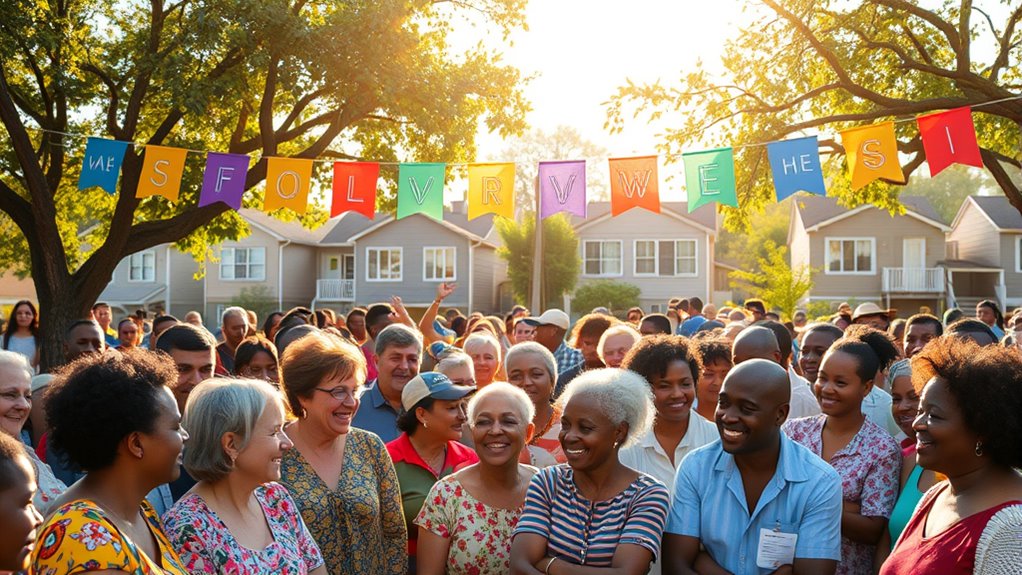Hope-based therapy can considerably enhance your resilience and recovery after a disaster. By focusing on your positive outlook, setting achievable goals, and engaging in community support, this approach empowers you to take charge of your healing. You’ll learn valuable coping strategies that can help alleviate depressive symptoms and improve your overall mental health. Plus, you’ll discover how participating in community initiatives strengthens social connections. There’s much more to uncover about this promising therapy.
Key Takeaways
- Hope-Based Therapy enhances resilience and promotes a positive outlook, essential for recovery after disasters.
- Community engagement in recovery efforts empowers individuals to take charge of their healing process.
- Therapeutic techniques help individuals develop coping strategies and reframe negative thoughts effectively.
- Evidence shows significant improvements in resilience and well-being from hope-based interventions in disaster contexts.
- Participatory models strengthen social networks and foster collaboration, enhancing community support during recovery.

When disaster strikes, it’s easy to feel overwhelmed, but hope-based therapy offers a path toward resilience and recovery. This approach focuses on enhancing resilience in individuals and communities affected by crises, fostering a positive outlook on the future. Through techniques that emphasize goal-setting and collective efficacy, you can learn to navigate the challenges of post-disaster life more effectively.
Community engagement plays a pivotal role in these interventions. By actively involving residents in collaborative recovery efforts, hope-based therapy empowers you to take charge of your healing process. Participating in community-based programs can help you build connections, share experiences, and mobilize resources essential for rebuilding your life. When you see others united in their recovery, it fosters a sense of belonging and mutual support that can be remarkably uplifting.
Hope-based therapy combines various therapeutic approaches, including psychoeducation, cognitive-behavioral therapy, and narrative therapy. These methods address your mental health needs by equipping you with valuable coping strategies. You’ll learn how to reframe negative thoughts, set realistic goals, and tackle problems head-on. This not only alleviates depressive symptoms but also enhances your overall psychosocial health.
Empirical evidence backs the effectiveness of hope-based interventions in various disaster contexts. Research shows these therapies considerably improve resilience and well-being, ultimately facilitating long-term recovery. They don’t just target immediate challenges; they help you develop adaptive behaviors that support sustained growth and mental health. Whether you’re part of a community program or receiving individual therapy, the skills you gain can positively impact your life.
Hope Therapy Protocols (HTPs) are particularly effective in clinical settings. They address mental health issues like depression and addiction, providing therapeutic benefits that help prevent relapse in substance abusers. If you’re struggling with addiction, HTPs can promote hope, reducing drug-seeking behaviors and encouraging healthier choices.
Participatory models within community-based initiatives empower you to identify needs and strengths within your community. This collaborative approach not only enhances your sense of agency but also builds collective efficacy, promoting cooperation and support among peers. The long-term impact of these initiatives fosters resilience and strengthens social networks, ensuring that you’re not alone in your recovery journey.
Frequently Asked Questions
What Is the Primary Goal of Hope-Based Therapy?
The primary goal of hope-based therapy is to enhance your overall well-being by helping you set clear goals and develop pathways to achieve them.
It focuses on increasing your mental energy for goal pursuit and fosters positive psychosocial outcomes.
How Does Hope-Based Therapy Differ From Traditional Therapies?
Hope-based therapy differs from traditional therapies primarily by focusing on positive outcomes and future possibilities instead of past traumas.
You’ll find it emphasizes goal setting and resilience building, encouraging you to view challenges as opportunities. While traditional therapies might dwell on pathology and problems, hope-based therapy promotes a narrative approach, highlighting your strengths and the importance of social support.
This holistic perspective empowers you to take action towards achieving your goals and enhancing well-being.
Who Can Benefit From Hope-Based Therapy?
Imagine planting a seed in a garden; with care and sunlight, it grows strong.
Similarly, hope-based therapy nurtures individuals from various backgrounds—adolescents coping with trauma, older adults facing stress, and rural communities seeking support.
You’ll find that this approach helps enhance emotional resilience, strengthens social bonds, and empowers individuals to create positive futures.
Are There Any Risks Associated With Hope-Based Therapy?
Yes, there are risks associated with hope-based therapy. You might find that overemphasizing hope without addressing real issues can lead to unmet expectations and disappointment.
Depending too much on external factors, like community support, can also be unreliable. Additionally, setting unrealistic goals based on hope may cause frustration and decrease your motivation.
Cultural sensitivity is essential; without it, you risk misapplying interventions, rendering them ineffective or even offensive.
How Long Does Hope-Based Therapy Typically Last?
Hope-based therapy typically lasts anywhere from a few sessions to several months, depending on your needs and the specific intervention.
You might find that brief hope interventions, like those for cancer patients, can be effective even in just four sessions.
Community resilience programs might run longer, offering ongoing activities.
Ultimately, the duration’s adaptable, ensuring it meets your psychological and psychosocial requirements while fostering a sense of hope and empowerment.
Conclusion
As you step into the aftermath of disaster, you feel the weight of despair around you. But then, a flicker of hope ignites within. Hope-based therapy isn’t just a concept; it’s a lifeline, guiding you through the shadows. With each session, you uncover resilience you never knew you had. Imagine the moment when the darkness fades, and a brighter future emerges. You’re not just surviving; you’re on the brink of thriving, ready to embrace a new beginning.










